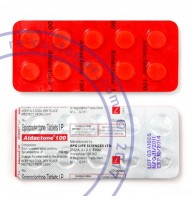Spironolactone generally takes several weeks to show noticeable results in treating acne. While some individuals might begin to see improvement in their skin condition within one to two months, significant changes typically occur around three to four months of consistent use. The delay in effectiveness is due to the time required for spironolactone to influence hormonal levels and reduce sebum production, which are key factors in acne development.
Initially, the medication works by blocking androgens, which are hormones that can increase oil production in the skin. This reduction in sebum can gradually lead to fewer and less severe acne lesions. It’s important to have realistic expectations and to continue with the prescribed treatment plan even if improvements are not immediately visible. Consistent use and regular follow-up with a healthcare provider are crucial to assess the medication’s effectiveness and make any necessary adjustments.
During the initial treatment period, some individuals might experience a worsening of acne before seeing improvement. This can be due to the body adjusting to the hormonal changes caused by the medication. Patience and adherence to the treatment regimen are essential during this phase. If after several months there is no significant improvement or if side effects become problematic, discussing these concerns with a healthcare provider is important for adjusting the treatment plan.
Overall, while spironolactone can be very effective for hormonal acne, its benefits typically become evident after a few months of consistent use.

